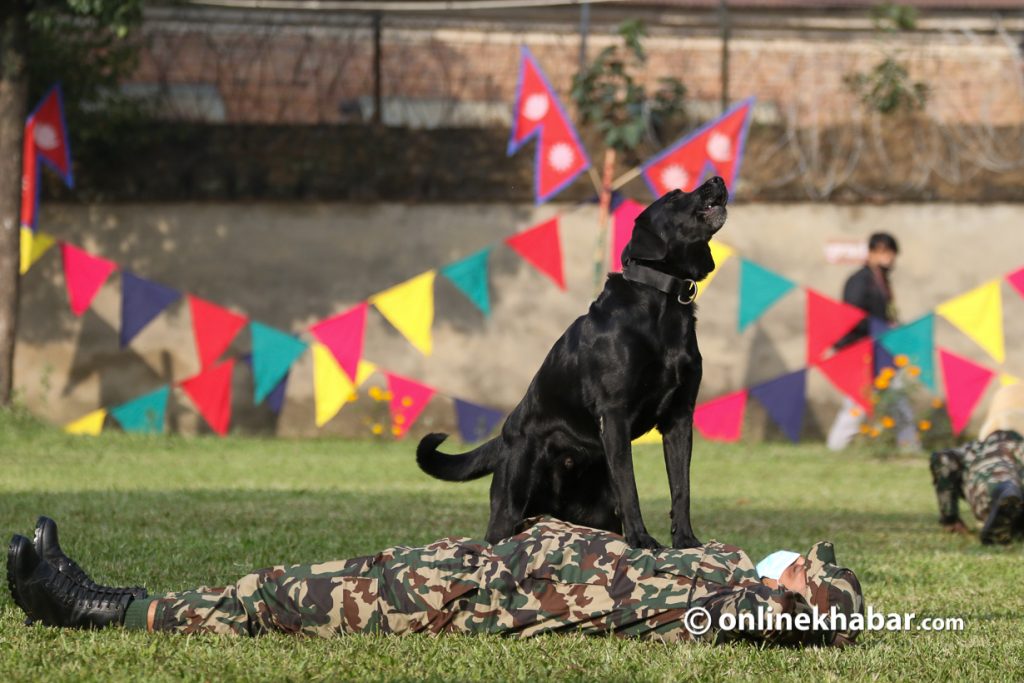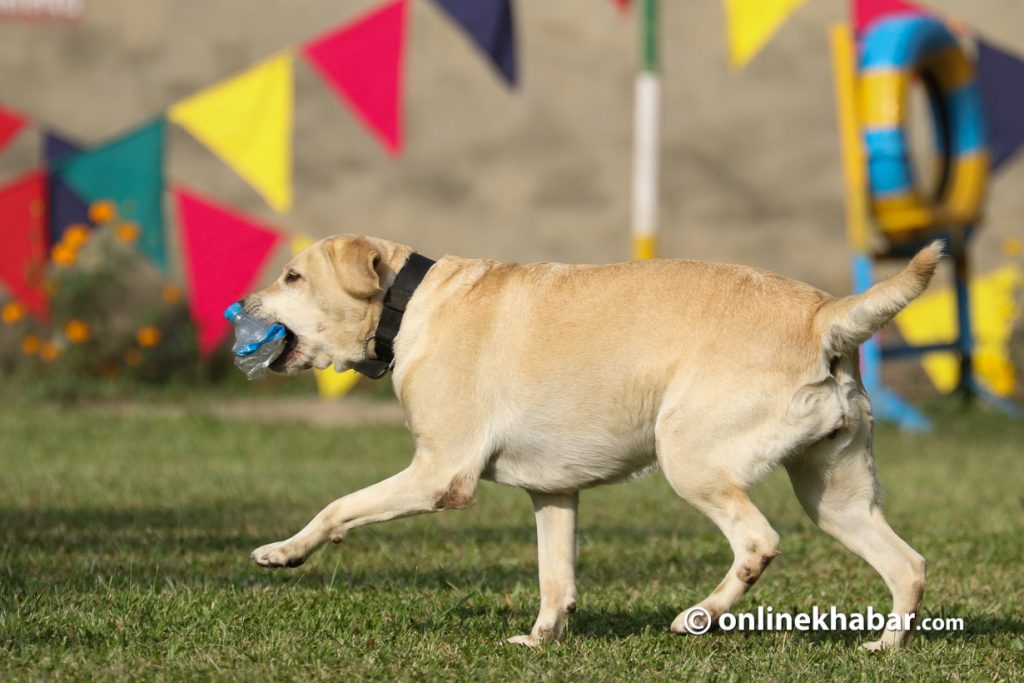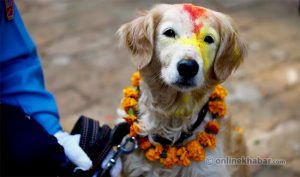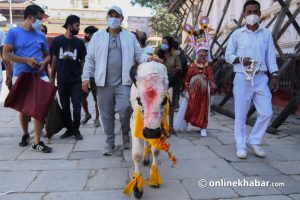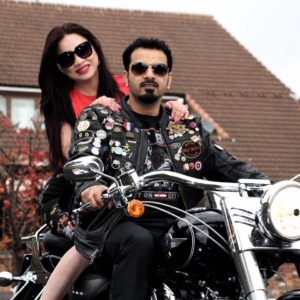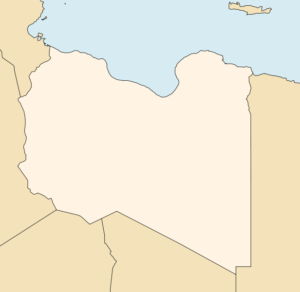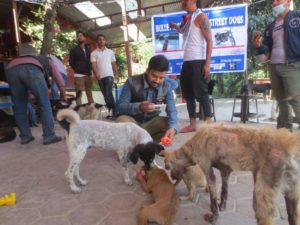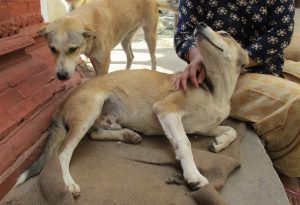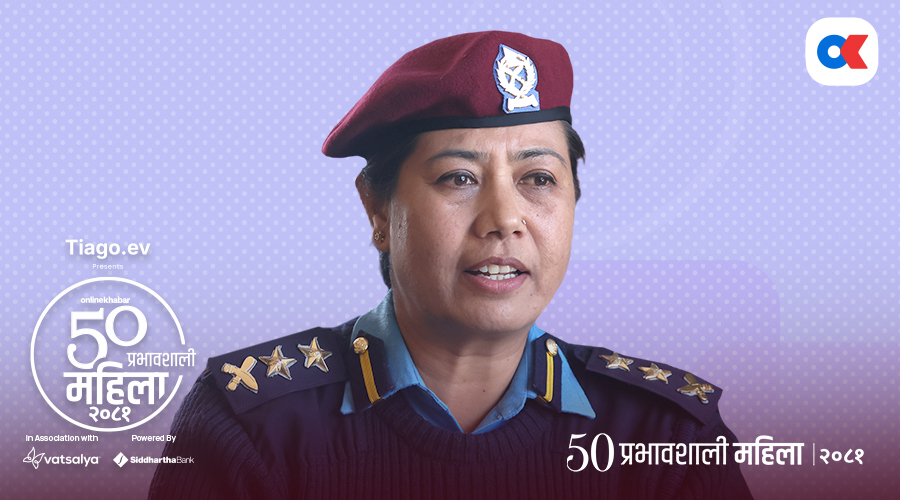Today is Kukur Tihar, the second day of the festival of lights. Many people are celebrating Kukur Tihar worshipping dogs, either pet or stray, by offering them tika, garland and food.
Like most Nepalis, the Nepal Army also celebrates Kukur Tihar with much fervour, worshipping all the dogs used in military services. In particular, at the Bhairav Bahan Company, Sano Thimi, Bhaktapur, an event is held on this day every year on this occasion. This is the place where sniffer dogs get trained. Therefore, they demonstrate their skills and are worshipped by the Nepal Army on every Kukur Tihar.
The role of sniffers in a police organisation is already known to the public, but their role in an army is something that people in Nepal rarely think of. But, interestingly, the dogs are too important for the Nepal Army too as they have even participated in UN peacekeeping missions in different parts of the world.
Wondering why?
Dogs in the peacekeeping missions
It has been 18 years since the Nepal Army has been sending such trained dogs to the United Nations peacekeeping missions. These dogs are selected for the mission as per the asked requirements of the mission, their traits and skills.
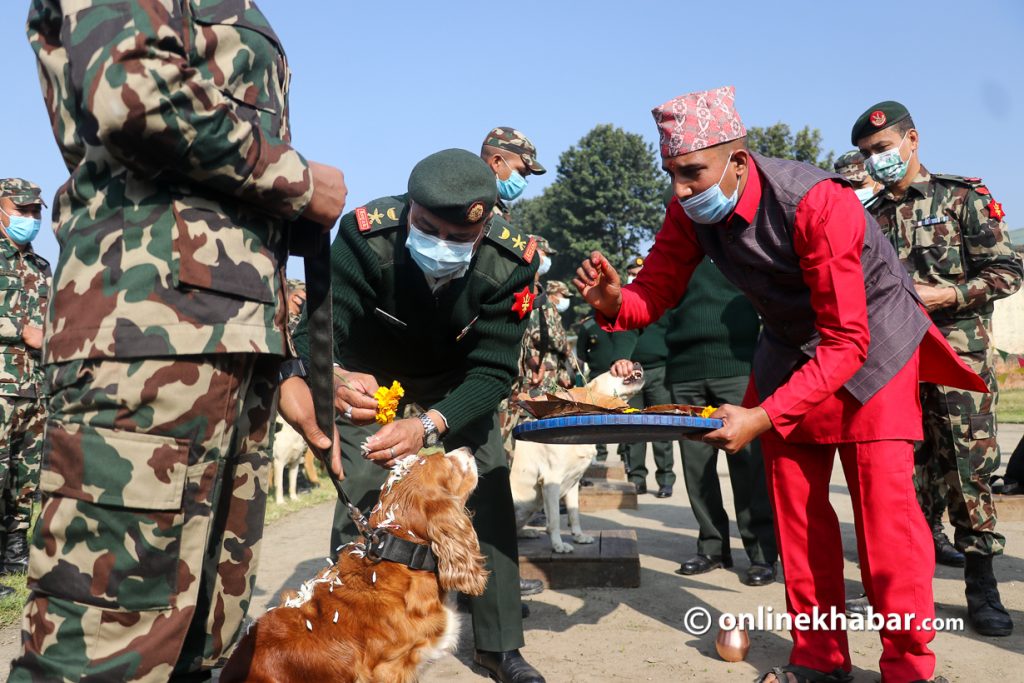
In the missions, the dogs are mostly used for arm and explosive detection and security purposes. As of now, four such dogs named Rex, Kilo, Bujo and Tony are serving in the UN mission in Libya, says Major Parashu Ram Thapa of the company. Two of them as a pair earn USD 890.04 per month and two others USD 995.72, according to him.
Two dogs named Shaan and Gaamini were sent to the UN mission in Liberia for the first time in the early 2000s at the call of the United Nations. So far, 13 dogs have contributed to the Nepali peacekeeping forces mobilised in Liberia and Libya.
According to Thapa, besides UN missions, two dogs are deployed in the High Altitude and Mountain Warfare School, Jomsom, and two in the NA Jungle Warfare School, Amlekhgunj. Likewise, two dogs of the WWF, trained by the Army School, are in the Chitwan National Park to help control the wildlife crime.
Other uses
This company houses 88 dogs (44 male and 44 female). It provides training to them and brings them to military use. Most of the dogs are bred there itself whereas a few are bought from elsewhere. The puppies are groomed for five to six months and after that, they are given basic obedience training for about three months. During the training, the temperament, and ability of the dogs are identified, informs Major Thapa.
“And as per the attitude and traits, they show, they are trained for special purposes such as infantry patrol, search and rescue, security, tracking, sniffing and explosive detection,” he adds.
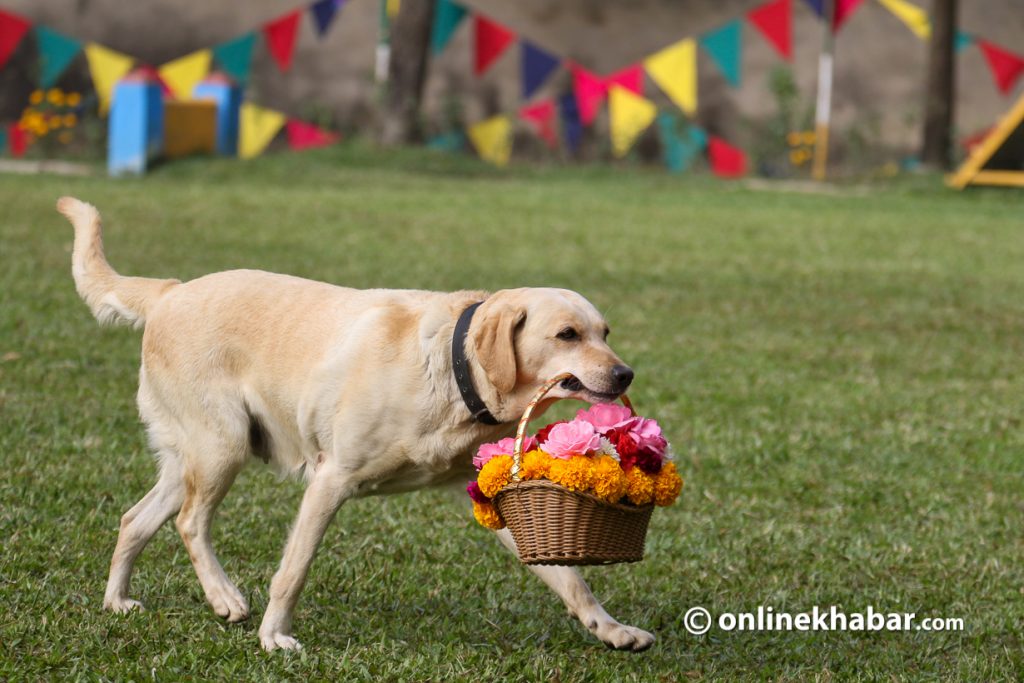
Apart from these, trained dogs are also used for sports and entertainment in many programmes organised by the Nepal Army.
Daily diet and care
The daily ration scale of 88 dogs here is Rs 377 per dog, which is more than double the scale of a soldier. They are regularly checked by veterinarians every Wednesday.
“They are fed a hygienic diet as per the recommendation of vet doctors. Generally, they are fed buffalo meat, milk, green vegetables, dog biscuits, rice and others every day,” says Thapa.
There is one soldier to take care of one dog. These dog handlers are also given basic and special training to look after and train the dogs. They are also sent to India, Pakistan and Bangladesh for training so that they can give the dog as per the changing time.
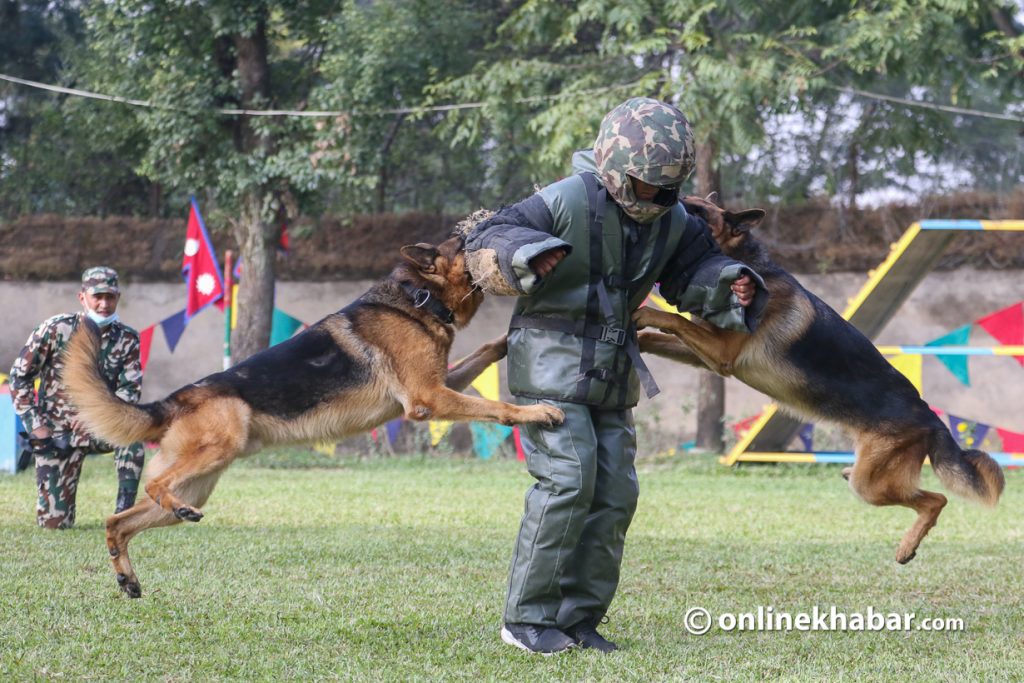
The dogs are employed for military use till they reach the age of eight years. However, their retirement age depends on their health condition, age and performance.
Following their death, they are paid respect as per the Hindu rituals and are buried.
